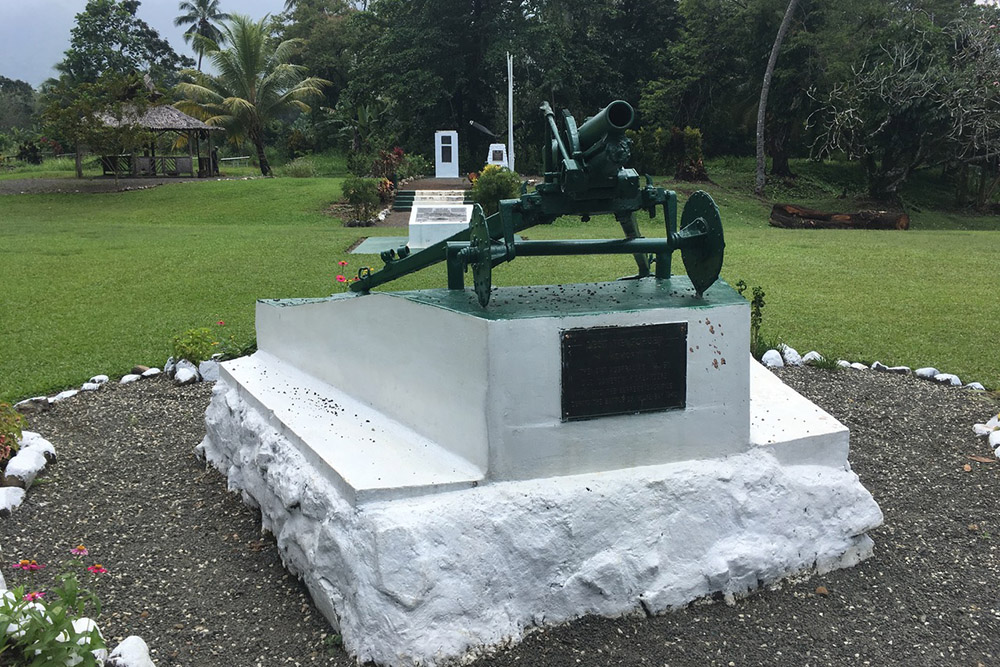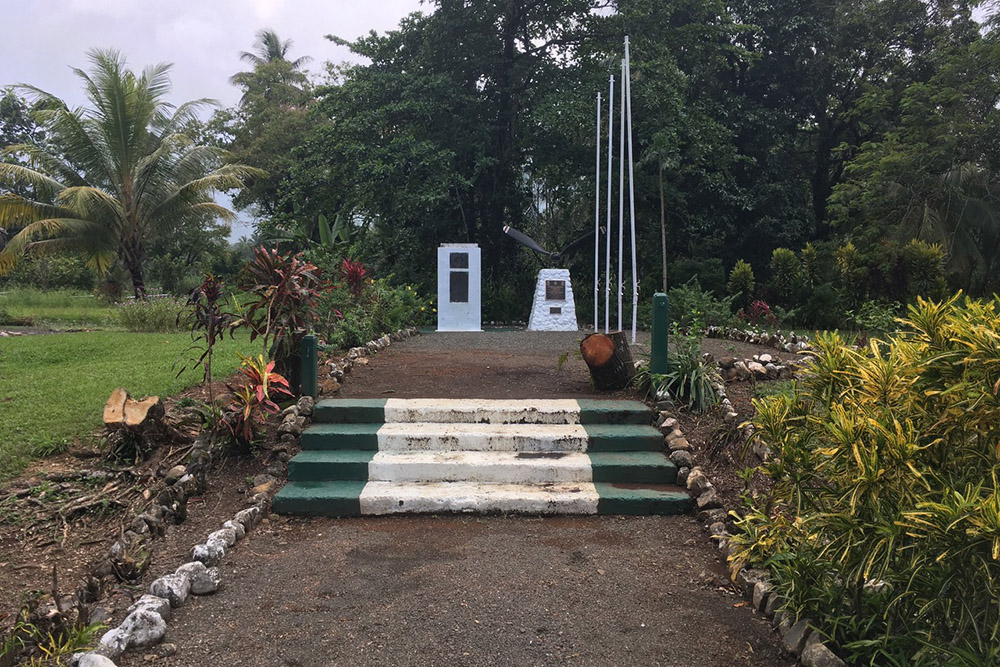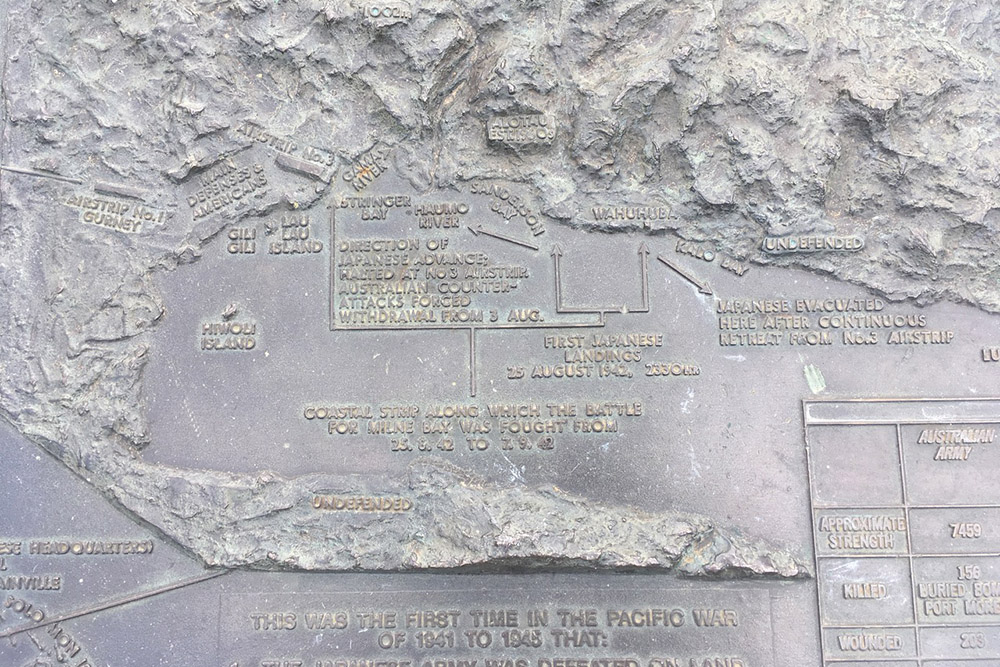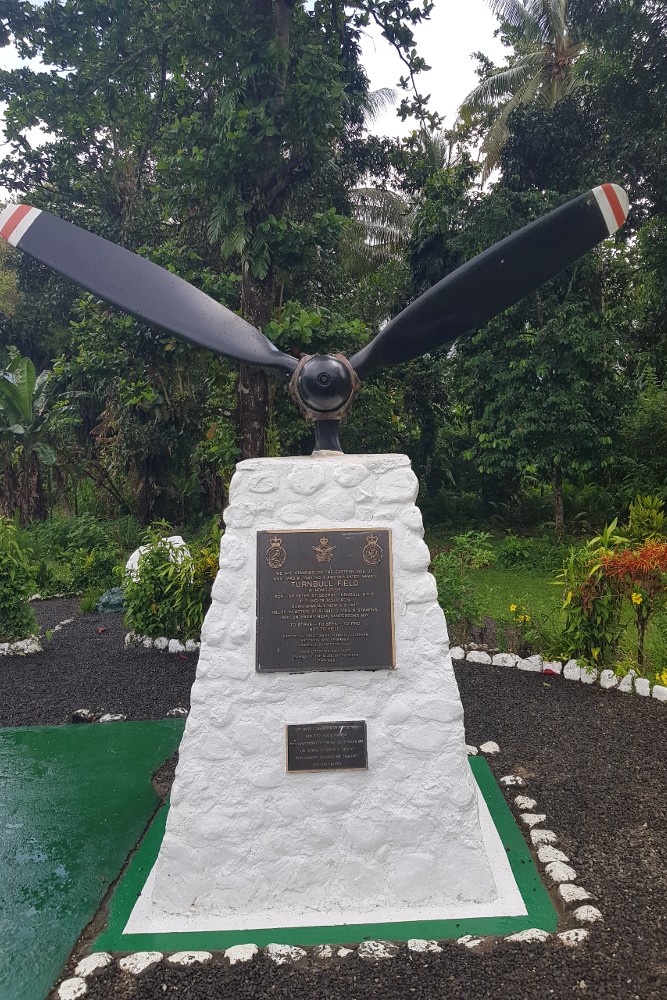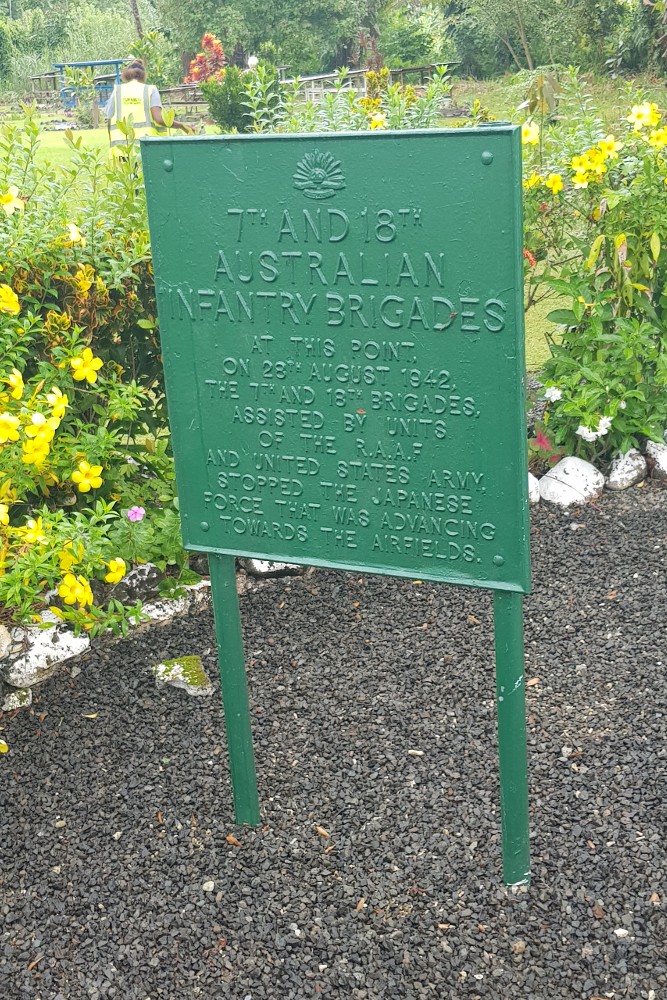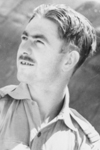Turnbull War Memorial Park
The current airport for Alotau is where on the maps Airstrip No. 1, Gurney, is indicated, although the decisive fighting took place in front of Strip No. 3, where there is now a small war memorial garden.
The memorial is on the main road from the airport into town. To get to there without your own car, just ask the bus driver to stop at the war memorial. Or hitch a ride in a local car. In general, most people in PNG are extremely friendly, although avoid wandering around on foot at night, if by yourself.
Because PNG is so inaccessible, the land campaigns for New Guinea are little understood in the west. Nearly all the Allied soldiers at Milne Bay were Australian, sent in during 1942 to secure New Guinea from the encroaching Japanese army. There were, however, some Americans based at Gurney, and American casualties, as well, in the bitter fighting from August 25 to September 7, 1942.
Tactically, the Japanese fought at Milne Bay just as they did on Guadalcanal at the Battle of the Tenaru. They landed assault troops farther down the shore and made a direct attack on entrenched Allied (here Australian) positions.
The fighting raged in the jungle all along the north coast of Milne Bay, and there were naval and air components to the fighting.
To get a feel for the Australian side of the battle, Ivan Southall’s "Bluey Truscott" is very evocative.
I have not read Michael Veitch’s new book, "Turning Point: The Battle for Milne Bay 1942 - Japan's first land defeat in World War II", but from the reviews and bits available on the internet it looks to be excellent.
For an American overview of the New Guinea campaigns, Eric Bergerud’s Touched with Fire: The Land War in the South Pacific has some good chapters on what happened in what is now PNG.
War Memorial Park
The park consists of three monuments and a relief map with an overview of the battlefield. One of the monuments is in memory of the 61st Battalion (Queensland Cameron Highlanders). The two memorials at the back are standing on the grave of 85 unknown Japanese marines who were killed on 31 August 1942.
The texts on the memorials:
In memory of the
officers, NCO’s and men of the 7 & 18 Aust Inf Bdes
who gave their lives in
defending Turnbull Field.
This marks the western most point in Milne Bay
of the Jap advance Aug-Sep 42,
also the southern most point
of the Jap advance in the S.W. Pacific.
83 unknown Jap Marines lie buried here.
Erected as a tribute by Australian forces serving in this area. June 1944"
"You are standing on the eastern side of
what was in 1942 No. 3 Airstrip later named
Turnbull Field
In Honor of Sqn Ldr Peter St George Turnbull, D. F. C.
C. O. of No 76 Squadron
Born Armidale NSW 9-2-1917
Killed in Action 27-9-1942 during a strafing
run on enemy near Sandersons Bay
To Strive - To Seek - To Find
Not To Yield
Erected by donations from family, veterans
and those who remember
Propeller donated by R.A.A.F."
Do you have more information about this location? Inform us!
Source
- Text: Matthew Stevenson + Kaj Metz
- Photos: Matthew Stevenson (1, 2, 3), Anthony (Sharky) Ward (4, 5)
- Pacific Wrecks
Nearby
Point of interest
- Turnbull Airfield (No. 3 Strip) - Gurney
- Gili Gili Dock - Gili Gili
- Swinger Bay Amphibious Training Centre - Alotau
Monument
- Gurney Airfield Memorial - Gurney
- Memorial Battle of Milne Bay 1942 - Alotau
- Memorial Corporal John French V.C. - Goilani
